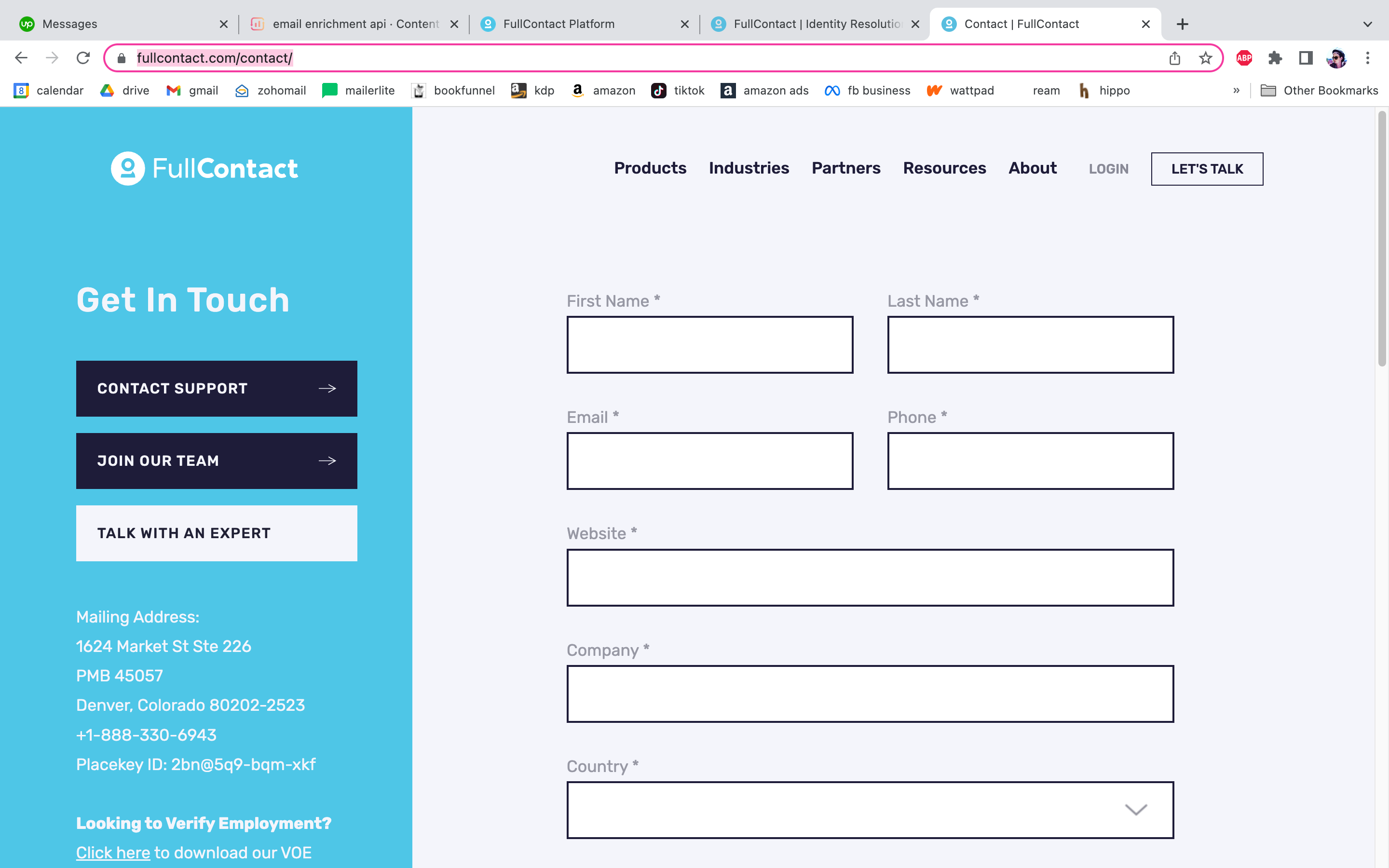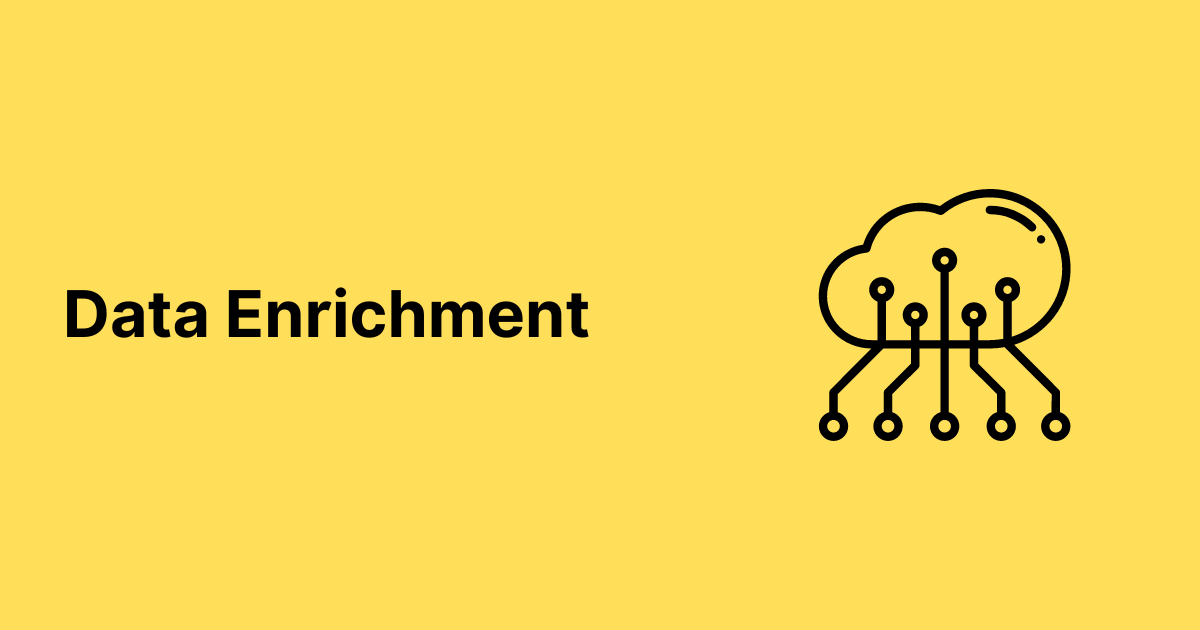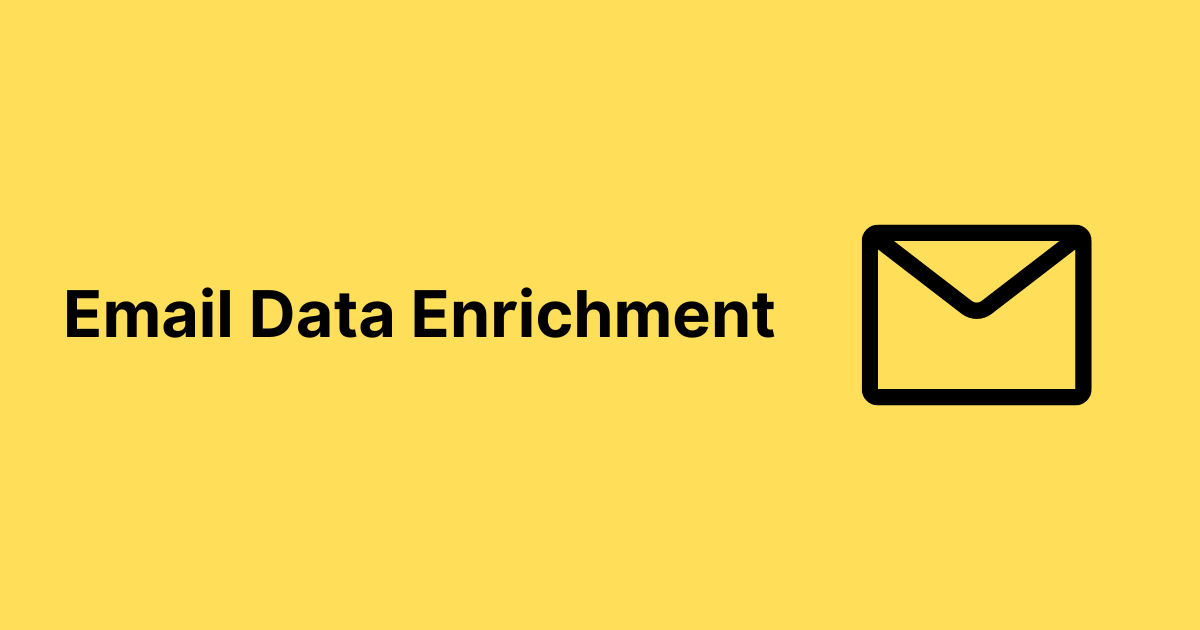Data enrichment is the process of improving data quality by leveraging third-party data solutions (i.e. data enrichment services) to enhance missing or incomplete data from first-party sources (i.e. your database.)
Key takeaways:
- The purpose of data enrichment is to improve the accuracy, reliability, and usefulness of customer data.
- Enriched data is a valuable asset for any size business. It allows businesses to gain insight into the purchasing habits and other behaviors of their customers and clients.
- Some of the potential disadvantages of enriching customer data include concerns about privacy and data security. Make sure any tool you use complies with relevant policies and regulations.
- Data enrichment is a growing field, expected to reach a market size of USD 3.5 Billion by 2030, growing at a CAGR of 8.5% between now and then.
What Is Data Enrichment?
Data enrichment is the process by which a company utilizes third-party data to complete and improve the raw data quality in its customer data warehouse. For example, a data or email enrichment tool or API could be provided with an email address and return more complete information on the customer or client found at that email address.
A company’s reasons for enriching data usually boil down to one of three pain points:
- Ineffective targeting/poor marketing – enriched data gives businesses a better picture of their consumers and their behavior, allowing them to create marketing campaigns and other communications that better target specific audiences and lead to increased sales.
- Ineffective lead generation – higher data quality means better personalization and targeting of cold leads, leading to higher ROI on lead generation efforts.
- Inefficient data management – some companies simply need automated solutions to handle gathering and verifying customer data.
Overall, data enrichment allows companies to gain a competitive advantage by using enhanced data to make informed marketing decisions, identify growth opportunities, and provide a better customer experience for their users.

Data Enrichment Examples
There are two main types of data enrichment: enhancing collected data and verifying collected data.
Enhancing Collected Data
The clearest example of enhancing existing information is using a user’s email address to create a complete customer profile for that user. Many data enrichment tools can take raw data like an email address and use that to find information like a user’s name, job title, social media profiles, geographical location, and online purchasing history.
Some data enrichment services can also reverse this process and use a person’s name to find their email address, given a company website for that employee. This can be particularly useful for lead generation and cold outreach.
Enhancing missing or inconsistent data is one of the key use cases for data enrichment.

Verifying Existing Data
Filling gaps in existing data isn’t the only way customer data platform enrichment tools provide value to businesses. Data cleansing (verifying and validating information – also called data cleaning) is a crucial part of maintaining a healthy customer data warehouse. The primary way data enrichment tools do this is by validating email addresses.
If your database or mailing list is full of fake or invalid email addresses, your email marketing campaigns will be highly ineffective. Sending emails to bogus addresses leads to a high bounce rate, which is the number one thing that hurts sender reputation.
Not only that, a large mailing list full of inactive or disengaged users leads to low click-to-open rates on your emails and costs you dearly in the long run. It doesn’t make sense to pay your email marketing platform to deliver emails to addresses that aren’t opening or reading them.

Benefits of Data Enrichment
The benefits of data enrichment tools can be boiled down into 5 key points. Let’s take a brief look at those now.
Enhanced Customer Insights
Data enrichment allows you to create a more complete and accurate picture of your customers and leads, meaning better targeting and personalization of marketing campaigns and lead generation efforts. You’ll see enhanced campaign performance that increases sales and drives customer acquisition.

Improved Efficiency
Improving location data for your users can help you to improve delivery and response times for those users, while also cutting down on costs for you. This is true not only for physical deliveries but also online: targeting website visitors based on their location means you can utilize edge computing to speed up network requests, while also serving localized content like highly-targeted ads and suggestions.
Additionally, understanding where your users may be dropping out or disengaging in the pipeline allows you to fix those leaks, improving the efficiency of your sales funnel.
Better Risk Assessment
Having a more complete understanding of your users’ needs and habits allows you to better identify potential issues with upcoming product launches.
Better Decision-Making
Knowing where the pain points are for your customers allows you to make better decisions for future products. Understanding exactly what your users need means you will be able to create new products that better serve them.

Types of Data Enrichment
It’s important to understand the various types of data enrichment and the ways in which they can be enriched, not only because it will make your data enrichment efforts more fruitful, but because privacy and security regulations differ depending on the types of data enrichment processes that you are engaging in.
B2B Data Enrichment
B2B data enrichment is primarily useful for fleshing out data analysis and out company profiles. The types of data that can be enriched include geographic data, demographic data, and behavioral data.
Because company data is publicly accessible and is not considered personal information, it is not governed by the same set of standards as information about individuals (for example, GDPR.) Therefore, B2B data enrichment tools can usually operate without worrying about violating data privacy laws such as GDPR (the General Data Protection Regulation) or CCPA (the California Consumer Privacy Act.)

B2C (Customer Data Enrichment)
Where companies need to be most careful is when enriching data for individuals. In this case, data privacy laws do apply, and the standards are more strict than they are for B2B, data collection, and enrichment.
While there is a fair amount of publicly available customer information online, private customer data files cannot be transferred from one third-party platform to another without explicit consent from the user.
When third-party data enrichment tools are used, it is ultimately the responsibility of the company to use the tool to protect customer data. That means you can’t claim ignorance of a data enrichment service’s methods – it is up to you to research and vet data enrichment options and ensure that the data source or service you pick complies with any applicable rules and regulations.

Best Data Enrichment Tools and Services
Let’s take a look at some of the top data enrichment and data cleansing services available for B2B and B2C data enrichment.
FullContact
FullContact has a large, well-maintained contact database that provides up-to-date data about the contacts in a first-party mailing list or database. Their raw data can be used to improve demographic data, allowing for rich customer segmentation and more engagement from users.

To get started with the service, contact the company and request a demo. They have a pay-as-you-go pricing model that is flexible enough for businesses of any size, but you will need to discuss your specific needs with one of their consultants to get pricing information.
Best for: small businesses and individuals up to enterprise
ClearBit
Arguably the leader in data enrichment services, ClearBit boasts results powered by machine learning and backed by rigorous manual QA to ensure data accuracy. Their powerful API guarantees the most correct data to give you better context about the contacts in your database. The one drawback is that they provide B2B data only – no B2C.

You can easily sign up for a free trial of the service at their website, which gives you access to a host of services, including de-anonymizing site traffic, determining ideal prospect profiles, and enriching email addresses. Plans include a business option with access to the complete suite of online tools and a “Powered by ClearBit” model that allows access to just the enrichment API.
Best for: large businesses and enterprise users
Enricher.io
Enricher.io is an easy-to-use service that provides demographic data enrichment for all types of customer data, including full name, phone, email, address, timezone, country, city, avatar, company name, company domain, and more.

Enricher does not offer a free trial or free tier. Plans start at $279/month for basic services and run to $879/month for pro options with dedicated technical support and GDPR compliance. (Be aware that the basic plan does not guarantee GDPR compliance.)
Best for: Enterprise
Hunter
Hunter.io offers a limited set of simple, easy-to-use features. The UI is uncluttered and clear, as are the offerings: either enter an email address to get data like a person’s company, job title, phone number, social media profiles, and more, or enter a person’s full name and company to get their email address.

Hunter also offers an email verification tool for data cleansing and removal of spam and fake address data from your mailing list.
Best for: individuals and small businesses who don’t need a lot of extra features
AbstractAPI
AbstractAPI’s free email validation and verification API is a simple service with a single purpose: to identify and eliminate invalid email address data from a list or database. It is a data cleansing tool rather than a data enrichment tool.

You can get started for free and continue to use the service free indefinitely, up to 100 requests per month. For businesses seeking more volume, plans start at $9/month and range up to $499/month for enterprise-level data.
Best for: businesses looking solely to verify or validate existing email addresses
Summary
In this article, we outlined the definition of data enrichment, looked at various ways companies enrich data, and talked about some of the ways that enriched data can benefit a business.
Data enrichment is the process of improving data quality by gathering relevant data together from multiple data sources to fill gaps in customer data, provide relevant context for the data, or verify the validity of existing data.
Crucially, enriched data allows a business to create a more complete picture of its customers and leads, leading to better targeting for marketing campaigns and lead generation, and allowing the business to make informed, data-driven decisions about new products and features.
Additionally, data enrichment can be used to verify and validate data accuracy for existing contacts, allowing companies to eliminate invalid data and improve engagement rates, sender reputation, and ROI on marketing campaigns.

Finally, quality data leads to a better customer experience by enabling a company to improve personalization through localized content, specific data points, and an understanding of customer preferences.
Companies seeking to manage data, fill gaps in missing data, remove redundant or outdated data, or reconcile disparate data should be aware of the laws and regulations governing data privacy. It is ultimately the responsibility of the company to enrich its own first-party data to ensure compliance with these laws.
FAQs
What is the difference between data cleansing vs data enrichment?
Data cleansing refers to the process of identifying and expunging invalid data, redundant data, or inconsistent data from a database. This can be done through email validation, name lookup, and other methods.
Data enrichment refers to the process of utilizing external data from third-party data sources to fill gaps in first-party customer data. A company might enrich data to improve its understanding of customer behavioral patterns or by collecting data to provide a better experience for its users.
What is the difference between data enhancement vs data enrichment?
Data enhancement and data enrichment are essentially the same thing. These are just two slightly different terms that refer to the same process.
Experienced software engineers and avid supporters of the developer community, specializing in APIs.







